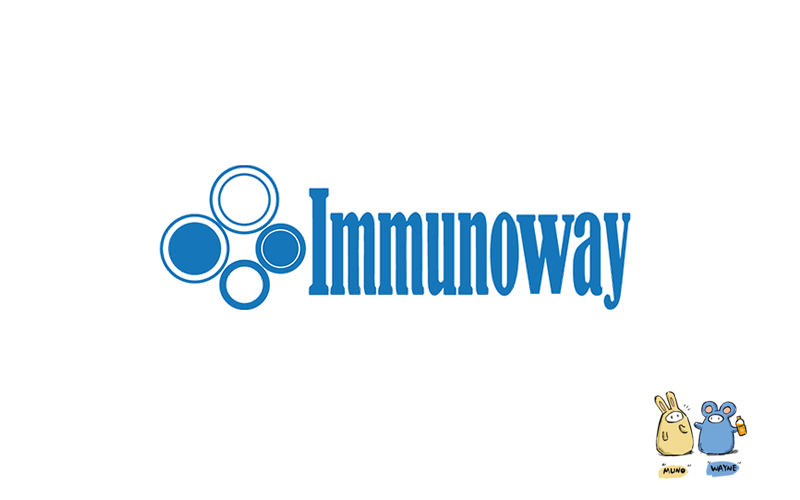
主要信息
Target
MITF
Host Species
Rabbit
Reactivity
Human, Mouse
Applications
WB, IHC, IF, ELISA
MW
52kD (Observed)
Conjugate/Modification
Unmodified

货号: YT2769
规格
价格
货期
数量
200μL
¥3,780.00
一个月
0
100μL
¥2,300.00
一个月
0
40μL
¥960.00
一个月
0
加入购物车


已收藏


收藏
详细信息
推荐稀释比
WB 1:500-1:2000; IHC 1:100-1:300; IF 1:200-1:1000; ELISA 1:10000; Not yet tested in other applications.
组成
Liquid in PBS containing 50% glycerol, 0.5% BSA and 0.02% sodium azide.
特异性
MITF Polyclonal Antibody detects endogenous levels of MITF protein.
纯化工艺
The antibody was affinity-purified from rabbit antiserum by affinity-chromatography using epitope-specific immunogen.
储存
-15°C to -25°C/1 year(Do not lower than -25°C)
浓度
1 mg/ml
实测条带
52kD
修饰
Unmodified
克隆性
Polyclonal
同种型
IgG
相关产品
抗原&靶点信息
免疫原:
The antiserum was produced against synthesized peptide derived from human MITF. AA range:151-200
展开内容
特异性:
MITF Polyclonal Antibody detects endogenous levels of MITF protein.
展开内容
基因名称:
MITF
展开内容
蛋白名称:
Microphthalmia-associated transcription factor
展开内容
别名:
MITF ;
BHLHE32 ;
Microphthalmia-associated transcription factor ;
Class E basic helix-loop-helix protein 32 ;
bHLHe32
BHLHE32 ;
Microphthalmia-associated transcription factor ;
Class E basic helix-loop-helix protein 32 ;
bHLHe32
展开内容
背景:
This gene encodes a transcription factor that contains both basic helix-loop-helix and leucine zipper structural features. It regulates the differentiation and development of melanocytes retinal pigment epithelium and is also responsible for pigment cell-specific transcription of the melanogenesis enzyme genes. Heterozygous mutations in the this gene cause auditory-pigmentary syndromes, such as Waardenburg syndrome type 2 and Tietz syndrome. Alternatively spliced transcript variants encoding different isoforms have been identified. [provided by RefSeq, Jul 2008],
展开内容
功能:
Alternative products:The X2-type isoforms differ from the X1-type isoforms by the absence of a 6 residue insert,Disease:Defects in MITF are a cause of Waardenburg syndrome type 2 with ocular albinism (WS2-OA) [MIM:103470]. It is an ocular albinism with sensorineural deafness.,Disease:Defects in MITF are the cause of Tietz syndrome [MIM:103500]. It is an autosomal dominant disorder characterized by generalized hypopigmentation and profound, congenital, bilateral deafness. Penetrance is complete.,Disease:Defects in MITF are the cause of Waardenburg syndrome type 2A (WS2A) [MIM:193510]. It is a dominant inherited disorder characterized by sensorineural hearing loss and patches of depigmentation. The features show variable expression and penetrance.,Function:Transcription factor for tyrosinase and tyrosinase-related protein 1. Binds to a symmetrical DNA sequence (E-boxes) (5'-CACGTG-3') found in the tyrosinase promoter. Plays a critical role in the differentiation of various cell types as neural crest-derived melanocytes, mast cells, osteoclasts and optic cup-derived retinal pigment epithelium.,PTM:Phosphorylation at Ser-405 significantly enhances the ability to bind the tyrosinase promoter.,similarity:Belongs to the MiT/TFE family.,similarity:Contains 1 basic helix-loop-helix (bHLH) domain.,subunit:Efficient DNA binding requires dimerization with another bHLH protein. Binds DNA in the form of homodimer or heterodimer with either TFE3, TFEB or TFEC.,tissue specificity:Isoform M is exclusively expressed in melanocytes and melanoma cells. Isoform A and isoform H are widely expressed in many cell types including melanocytes and retinal pigment epithelium (RPE). Isoform C is expressed in many cell types including RPE but not in melanocyte-lineage cells.,
展开内容
细胞定位:
Nucleus . Cytoplasm . Found exclusively in the nucleus upon phosphorylation. .
展开内容
组织表达:
Expressed in melanocytes (at protein level). ; [Isoform A2]: Expressed in the retinal pigment epithelium, brain, and placenta (PubMed:9647758). Expressed in the kidney (PubMed:9647758, PubMed:10578055). ; [Isoform C2]: Expressed in the kidney and retinal pigment epithelium. ; [Isoform H1]: Expressed in the kidney. ; [Isoform H2]: Expressed in the kidney. ; [Isoform M1]: Expressed in melanocytes. ; [Isoform Mdel]: Expressed in melanocytes.
展开内容
研究领域:
>>Mitophagy - animal ;
>>Osteoclast differentiation ;
>>Melanogenesis ;
>>Pathways in cancer ;
>>Transcriptional misregulation in cancer ;
>>Melanoma
>>Osteoclast differentiation ;
>>Melanogenesis ;
>>Pathways in cancer ;
>>Transcriptional misregulation in cancer ;
>>Melanoma
展开内容
信号通路
Cellular Processes >> Transport and catabolism >> Mitophagy - animal
Organismal Systems >> Development and regeneration >> Osteoclast differentiation
Human Diseases >> Cancer: overview >> Pathways in cancer
Human Diseases >> Cancer: overview >> Transcriptional misregulation in cancer
Human Diseases >> Cancer: specific types >> Melanoma
文献引用({{totalcount}})
货号: YT2769
规格
价格
货期
数量
200μL
¥3,780.00
一个月
0
100μL
¥2,300.00
一个月
0
40μL
¥960.00
一个月
0
加入购物车


已收藏


收藏
Recently Viewed Products
Clear allToggle night Mode
{{pinfoXq.title || ''}}
Catalog: {{pinfoXq.catalog || ''}}
Filter:
All
{{item.name}}
{{pinfo.title}}
-{{pinfo.catalog}}
主要信息
Target
{{pinfo.target}}
Reactivity
{{pinfo.react}}
Applications
{{pinfo.applicat}}
Conjugate/Modification
{{pinfo.coupling}}/{{pinfo.modific}}
MW (kDa)
{{pinfo.mwcalc}}
Host Species
{{pinfo.hostspec}}
Isotype
{{pinfo.isotype}}
产品 {{index}}/{{pcount}}
上一个产品
下一个产品
{{pvTitle}}
滚轮缩放图片
{{pvDescr}}




















